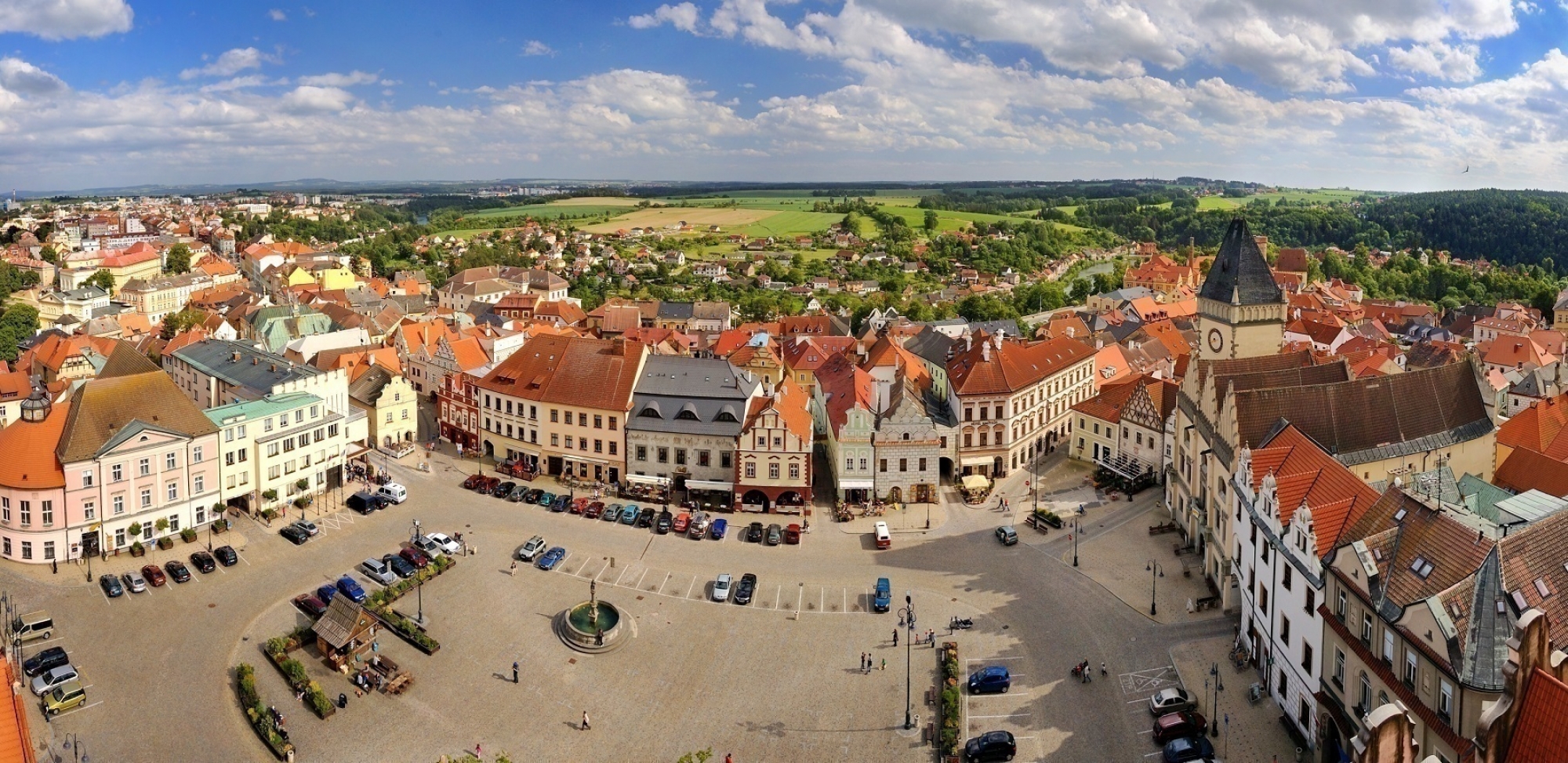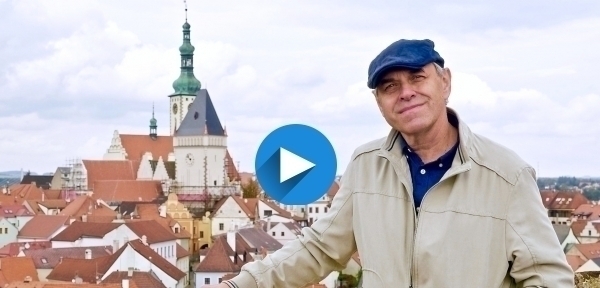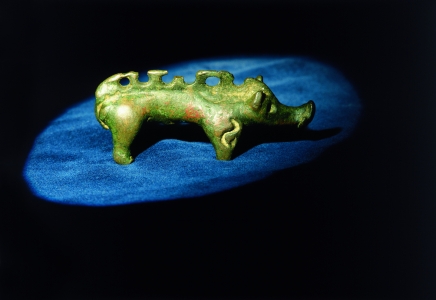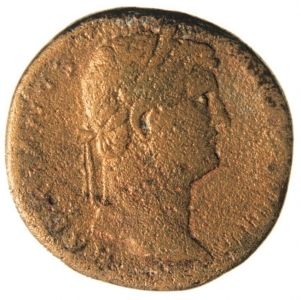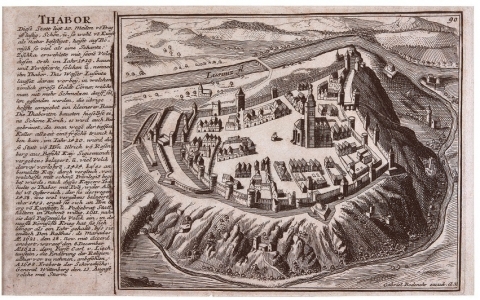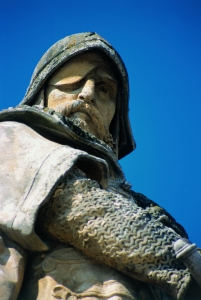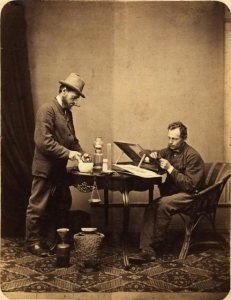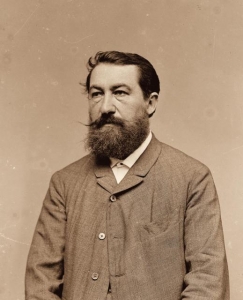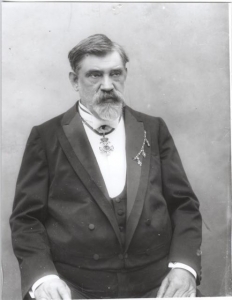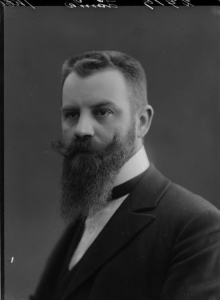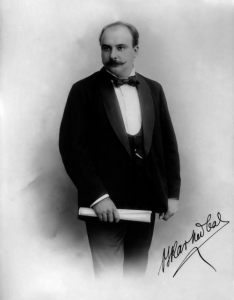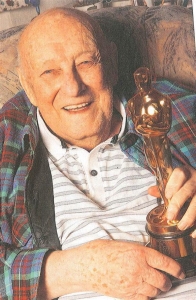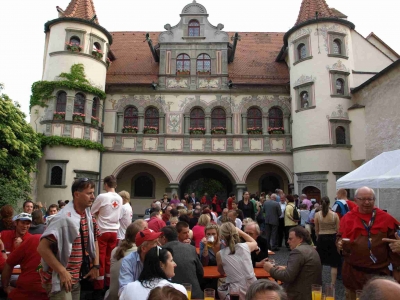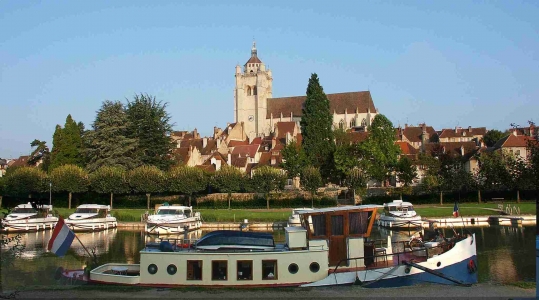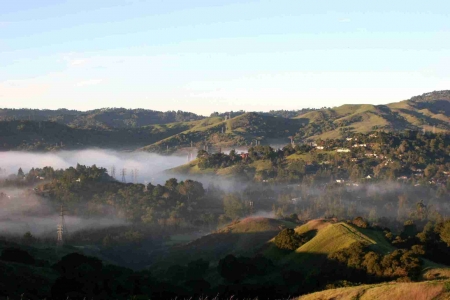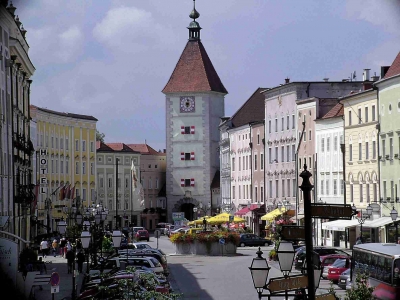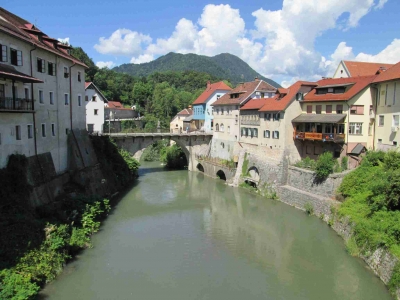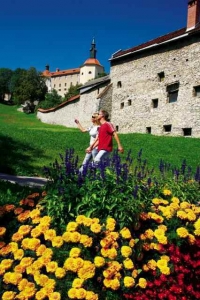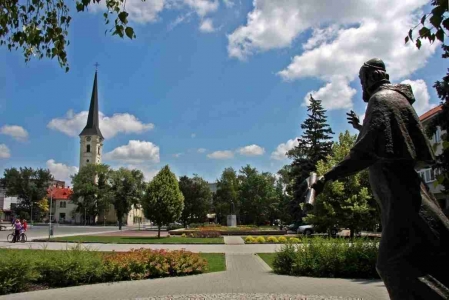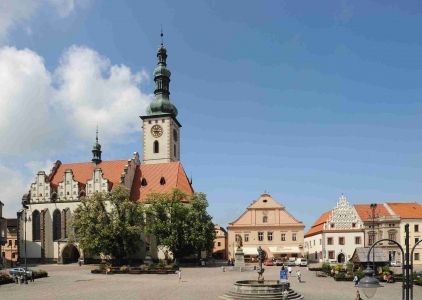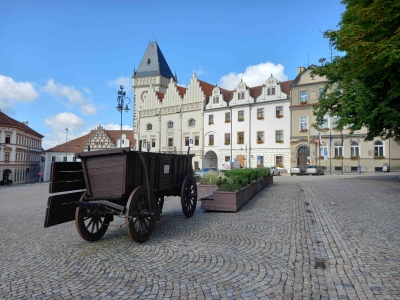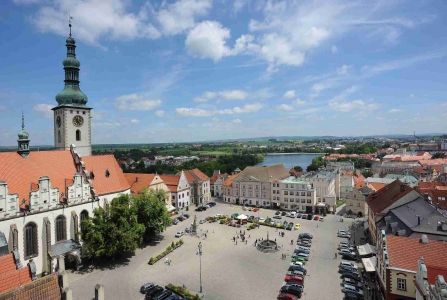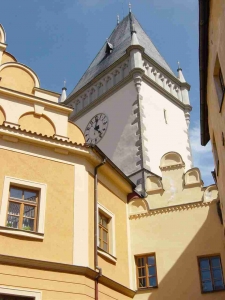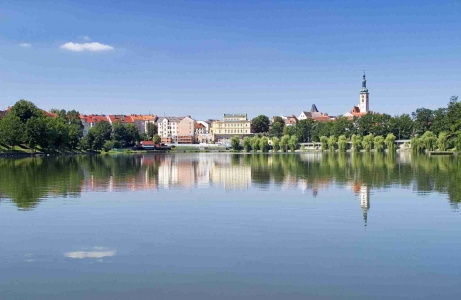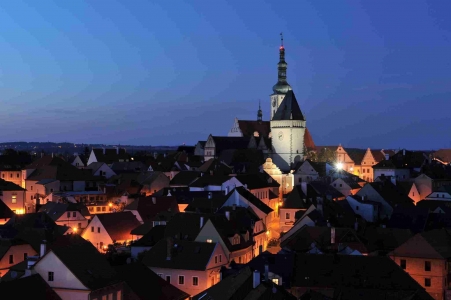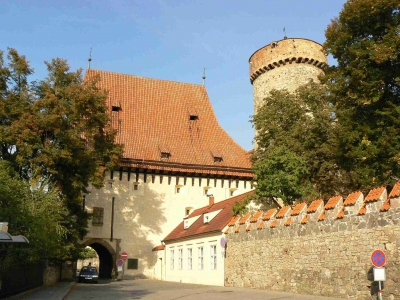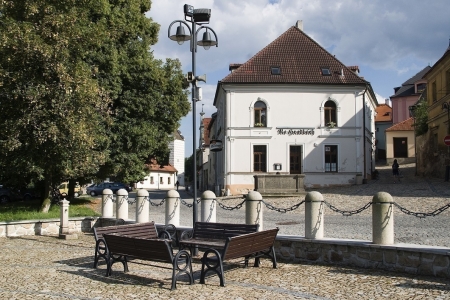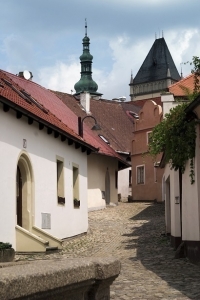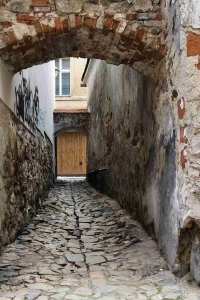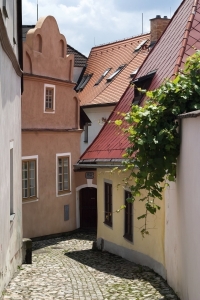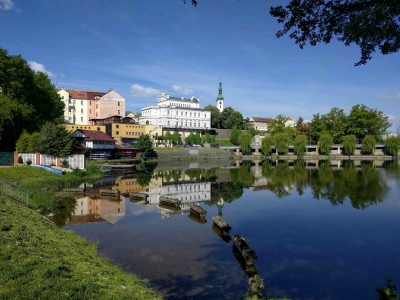About city
Nowadays, the town of Tábor is the second largest town of South Bohemia with more than 35 thousand inhabitants and it has become one of the region's transport, economic and cultural centers.
Basic information
Area: 6221 ha
Number of inhabitants: 34 000
The highest altitude: Žižka square - 450 metres above sea level
Locate: The City of Tábor lies on the northern edge of South Bohemia, on the boundary of the Třeboň Basin and the Vlašim Highlands, 83 km south of the capital city of Prague, 60 km north of České Budějovice (the centre of South Bohemia).
Documentaries, videos and spot
Film Tábor - dream, city, symbol
Czech Television, FRMOL Production and the town of Tábor filmed a documentary film about the origin and history of Tábor on the occasion of the 600th anniversary of the founding of the town. The film focuses significantly on historical moments from the foundation to the present day. Actor Miroslav Táborský accompanies the documentary in his unique way. The film can be viewed on that link: https://www.youtube.com/watch?v=nlIWBbAX1vY
MestoTabor YouTube Channel
Under this official profile, you will find a number of presentation videos of the city or clips from cultural events.
Choral Who are God's Warriors - 2020 version
An extraordinary musical project in cooperation with students, graduates and professors from the Berklee College of Music, the Julliard School, the New England Conservatory, the Jaroslav Ježek Conservatory, HAMU and the Prague Conservatory, thanks to which a new orchestral and choral arrangement of Hussite music was created for the 600th anniversary of the founding of the city chant Who are God's warriors. It was recorded by 125 musicians and singers from 6 continents with the assistance of 6 important names in the music world.
History
The birth of the town in spring 1420 took place under exceptional circumstances. It is linked not only to Jan Žižka, but also to Jan Hus, the great reformer of the Catholic church. Hus himself resided in the fortress of Kozí Hrádek Castle and in Sezimovo Ústí near the future location of Tábor in 1413 and 1414. This is where a group of Hus' disciples and followers decided to make their ideals and dreams of a fair society come true. Their effort is also reflected in the biblical name, i.e. Mount Tabor in Palestine, which they chose to be the name of their new settlement. However, the town soon became mainly the center of the power of the Hussite movement. Within the framework of the Czech state, this town represented an autonomous political unit with its own economy, armed forces and even foreign policy. In 1437 the town was granted the privilege of the status of a royal town by the Roman Emperor and Czech King Sigismund of Luxembourg. However, not until 1452 did Tábor surrender to the troops under the command of the country's steward George of Poděbrady and the proud fortress acknowledged the Czech king as their lord. This time even the unique fortification system developed from the founding of the town onwards did not suffice to maintain the independence of Tábor.
A quieter period in the late 15th century enabled the exceptional growth of the town. The very beginning of the 16th century witnessed the gradual building of the Town Hall, the symbol of the town's wealth and prestige. It was followed by the generous reconstruction of the town's main shrine, the Church of the Transfiguration of Jesus on the mount of Tabor, as well as the building of Jordán, the first storage reservoir in Central Europe. Great fires, which destroyed most of the citizens' houses, often made of wood, mainly in 1532 and 1559, resulted in not only personal tragedy, but also a spur to the building industry. At that time, Tábor was finally transformed into a town made of stone and the faces of burgher houses were covered by numerous variations of the sgraffito decorations, typical of the age of the Renaissance. At the same time, the town's underground system was being completed. This tourist attraction was formed from the 15th century as a result of extension of cellars under the individual buildings of the Old Town. Many cellars were gradually connected thus creating a system of underground areas. A part of this system was opened to the public after World War II.
In 1547 the town refused to provide military assistance to the Czech King Ferdinand I. in his campaign against the German Lutherans. The Habsburg ruler's punishment was harsh and involved mainly confiscation of vast lands, which had always formed the basis of the town's prosperity. Tábor also refused to stand by the Habsburgs in 1618 and joined the uprising led by non-Catholic aristocracy. When, three years later, the town finally yielded to the Emperor's General Marradas, the imperial troops looted it mercilessly. The Tábor citizens fared similarly in the summer of 1648, when they fell prey to the Swedish army.
After the Thirty Years' War was over, the Tábor citizens could enjoy a long period of peace, essential for the restoration of the wartime loss. The atmosphere of the everyday life as well as cultural happenings was enlivened by the arrival of the Augustinian monks in the mid-17th century, for whom Antonio de Alfieri, an Prague architect of Italian origin, built a new monastery. The early 18th century saw another High Baroque-style monument being built in the vicinity of the town. The pilgrimage church in the memorial place in the village of Klokoty is believed to have been designed by Jan Santini Aichl, a top European figure in Baroque-style architecture.
The efforts of several generations of patriotic intellectuals triggered the national awakening and revival of the national life in the 19th century. This was reflected in the new upswing of the cultural importance of Tábor. The establishment of the grammar school where instruction was provided solely in Czech (the first of this kind to emerge in the then Habsburg monarchy) and the polytechnic in the 1860s restored the tradition of Tábor's education. In 1878, the town opened the town museum, whose activities helped develop interest in the Hussite epoch within Czech history and the local history of Tábor.
The interest did not fade even after the formation of the independent Czechoslovakia and even the German occupation from 1939 through 1945 subdued the interest only partially. The legacy of the 156 innocent victims is commemorated by the memorial erected in the Prague Suburbs in the place of a former Nazi execution ground.
The post-war development is characterized by further territorial growth of the urban complex, growth of the population as well as efforts to consolidate the cultural and historical traditions of the town. Nowadays, the town of Tábor represents a natural center of the district and region.
Famous people of Tábor
Jan Hus (1371, Husinec u Prachatic – 1415, Constance) was born in a South Bohemian village, but spent most of his life at Charles University in Prague, where he studied and read his lectures. He returned to South Bohemia as a renegade because he had publicly criticized the sale of indulgence as well as other deficiencies in the acts of the then church. In Sezimovo Ústí Master Jan Hus found peace for work and other public sermons. The nearby Kozí Hrádek Castle where he used to stay is, much to his credit, a favorite destination for tourists today. Tábor boasts the monumental memorial of Jan Hus situated in the heart of the square which also bears his name. And he truly deserves all this praise, for his adherence to moral ideals, even if one's own life is the price, exceeding the limits of that momentous historical epoch. Jan Hus also sets a non-flattering mirror to the conditions of current society.
Jan Žižka of Trocnov (*after 1370 – 11.10.1424) The most famous Czech warrior, captain of Hussite troops and a legendary person in Czech history. He was appointed one of the four Tábor captains and as such he went on achieving military success. In 1421 he participated in the eradication of religious sects in Tábor. Due to ideological disputes with Táborites he left for East Bohemia in early 1423, establishing an East-Bohemian Hussite Association there.
Ignác Šechtl (1840, Prague – 1911, Tábor) was one the pioneers of the then sensational invention – photography. He began in Pilsen, but opened a permanent studio in Tábor in 1876. His studio also made the oldest photographs of the town. Šechtl's descendants still pursue photographic art and the digital archive is also made available.
August Sedláček (1843, Mladá Vožice – 1926, Písek) devoted his entire life to history, not only on a professional basis, but also as a hobby. Only in this way could he compile a vast encyclopedia of aristocrats' residences and manors, i.e. a work which would nowadays require collaboration within extensive teams of professionals. He was a history teacher at the real grammar school in Tábor and also contributed to the founding of the local museum and collecting of archive materials documenting the history of Tábor. Its birthplace now features a memorial hall commemorating the life of this outstanding scholar.
František Křižík (1847, Plánice u Klatov – 1941, Stádlec u Tábora). Křižík can well be compared to the heroes of novels by Jules Verne. This gifted man of science and industry created a number of inventions and patents, especially in the field of electrical engineering. This "Czech Edison" built the first electrified railway line leading from Tábor to Bechyně in 1903. This line, which is still in use, sometimes hosts rides of restored original carriages from Křižík's era.
Richard Lauda (1873, Jistebnice – 1929, Tábor) a painter, graphic artist and illustrator was one of the copious artists who were significantly influenced by the environment of South Bohemia. He created many paintings and graphical works depicting Tábor and its surroundings, of which he particularly favored his birthplace. But he also devoted much time to illustrating books for children and educational aids. The versatility of Lauda's work is also documented by his memorial hall in Jistebnice.
Oskar Nedbal (1874, Tábor – 1931, Záhřeb), this native of Tábor is depicted in a bust situated in the lobby of the Tábor Theater, which also bears his name. Oskar Nedbal came from a musical family living in Tábor and he was able to make full use of his inherited gift mainly as a violin virtuoso, a conductor and composer of ballets and operettas. His appearances within the Bohemian Quartet won him great international reputation; however, it is his most famous operetta, the Polish Blood, that the Tábor Theater stages most often.
Karel Černý (7. 4. 1922 - 5. 9. 2014) - Czech film architect and designer, Oscar Award winner in the category Best Art Direction for the film Amadeus.
Partner towns
Tábor has partnered with the following towns and cities: Konstanz in Germany (1984), Dole in France (1997), Orinda in US (1999), Wels in Austria (2005), Škofja Loka in Slovenia (2006), Nové Zámky in Slovakia (2011).
